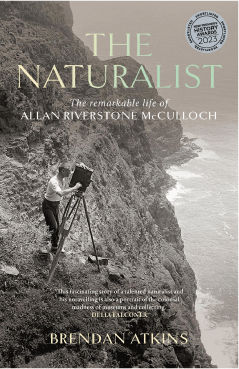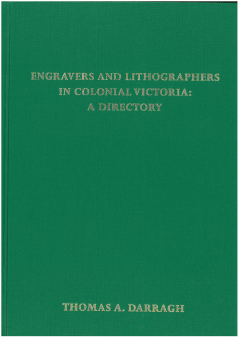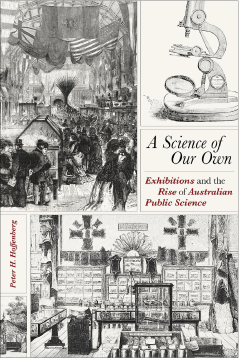Reviews
Compiled by Martin Bush A *
A *
A
Brendan Atkins (2022) The Naturalist: the remarkable life of Allan Riverstone McCulloch, NewSouth Books, Kensington. 208 pp. ISBN: 9781742237756, $34.99.
Around the world, natural history museums hold information about the biodiversity of their regions. But rather than being simple written records, these institutions hold physical specimens; carefully catalogued remains of animals that serve both as evidence for what lives where, and also as an essential resource for understanding how different species are related. In today’s world of rapid environmental change, these specimens are a vital source of data that lets scientists ask how wildlife has changed over time, with shifts in home range, body size and genetic diversity all being captured within the museum’s collections. But these treasure troves of scientific knowledge did not just spring into existence, they were built over time by ‘naturalists’—early scientists who often dedicated their lives to the collection and care of their museum’s specimens, with each new generation picking up from the one preceding, and together seeking to build an unbroken record of life on earth, housed across the world’s natural history museums. This was sometimes done, however, at great personal cost to these individuals themselves.
The Naturalist, by Brendan Atkins, is a fascinating and sometimes confronting biography that explores the legacy of one of Australia’s pioneering museum scientists: Allan Riverstone McCulloch. Starting with his early career as an unpaid 13-year-old in 1898, this book follows his progress through the museum hierarchy, until he became the senior zoology curator and lead exhibition designer at the Australian Museum, one of Australia’s oldest scientific institutions. The narrative follows themes, rather than strict chronology, filling out each section of McCulloch’s life in turn, from his scientific interests, international travels and artistic pursuits, to his struggles with the museum’s often unsupportive Board of Trustees, and, ultimately, to battles with his own mental health.
For the uninitiated, the early chapters of this book provide important background into the role of museums and how these unusual organisations are governed and staffed. Perhaps surprisingly, we discover that McCulloch did not attend university to learn his trade, but was instead trained through a series of cadetships and apprenticeships under the tutelage of the museum’s curators. This enabled him to gain the specialist training essential for a career at the museum, learning skills in animal identification, specimen collection, and the preparation of new specimens. McCulloch was also trained in natural history illustration and he ultimately became a pioneer in the use of photography and cinematography to share pictures of wild animals with the museum’s visitors through exhibition displays and public presentations. Beautiful examples of these images are reproduced in the colour plates that centre this volume.
McCulloch’s own speciality was in the identification of Australia’s fish and crustaceans. He travelled widely to build the museum’s collection, visiting the Great Barrier Reef and Lord Howe Island, but also going further afield into the South Pacific and to Papua New Guinea. All of his specimens were meticulously recorded in a card index, with detailed information captured for each specimen—records that today form the very basis of our understanding of how marine species are adapting to climate change, by showing how ranges have changed over time as species shift southward in pursuit of cooler waters. For a naturalist like McCulloch, it is the specimens collected that will ultimately form a lasting legacy.
But as well as sharing McCulloch’s contributions to science, this biography also delves into the challenges he faced through his career. When the First World War broke out in 1914, he struggled with the realities of seeing his junior staff enlist, while he stayed behind to care for his ill mother. Likewise, the museum’s Board of Trustees is often presented as combative to McCulloch, especially when it rejected his application to travel to Honolulu to present at a marine fisheries conference. Faced with competing priorities and an overwhelming workload, a picture begins to emerge of a man struggling to live up to the expectations of both his role and his own personal ambitions. Indeed, the second half of the book takes a decidedly darker turn as we learn about McCulloch’s participation in grave robbing and theft of cultural artefacts during collecting trips to Papua New Guinea, where he was tasked with obtaining objects for the museum’s ethnographic collections.
The later chapters recount McCulloch’s failing physical and mental health. To recover, he would retreat to Lord Howe Island, but rather than resting as instructed, we hear about his frequent correspondence with his colleagues back at the museum. It becomes a sadly familiar story, with McCulloch suffering from a combination of burnout and mental health issues, ultimately leading to his tragic death at the young age of forty. In an obituary penned by Charles Anderson, the then director of the Australian Museum, McCulloch is said to have ‘paid the penalty of enthusiasm in his chosen field of research’ and that ‘we must regard him as a martyr in the cause of science’.
Throughout this biography, Brendan Atkins is able to paint a very real picture of what life was like for museum scientists as they sought to collect a sample of the world in which they lived. Today we still depend upon the specimen collections they built, but rather than simply idolising early naturalists like Allan McCulloch, we are perhaps better served by learning from their complete stories.
The author declares no conflict of interest.
David Hocking
Tasmanian Museum and Art Gallery
Darragh, Thomas A. (2023) Engravers and Lithographers in Colonial Victoria: a Directory, Ancora Press, Monash University, Melbourne, 2023. xxii + 321 pp. ISBN: 9780648738527, first edition 100 copies, $60.00.
The outcome of many decades of work, Tom Darragh’s Engravers and Lithographers in Colonial Victoria comprises a richly illustrated overview of Victorian engraving and lithography, and a biographical directory of the individuals and firms who provided illustrations for Victorian books, newspapers, theatre posters, prints, music, labels stationery, ‘as well as a host of other printed items’.
The author notes that his volume ‘should allow the approximate dating of undated printed illustrations and printed ephemera’ in Victoria, but the work value far exceeds this brief in geography as well as in applications. The entries include individuals active in several Australian colonies, and include information important for historians on many aspects of colonial print media in Australia, including scientific publications, and on the history of technology.
The introduction gives an outline of the four main processes involved in engraving and lithography: copper or steel engraving; lithography; wood engraving and wood cuts; and process engraving. In addition, it sketches the history of the trades in Melbourne, and in a number of regional centres; Geelong, Ballarat, Bendigo, Castlemaine, Beechworth, and Warrnambool. Using census information, Darragh also calculates the decadal numbers of individuals working in the trades, 1871–1901.
There can be no doubt that the mass digitisation of records has assisted Darragh in his research, but he has also drawn on a deep knowledge of primary published and manuscript sources for the history of Victoria. These include rarely cited series from the Public Record Office of Victoria such as: factory registrations (providing information on the number of individuals employed, and occasionally floor plans); public service applications (with information on education, training and references); and bills of sales for equipment bought with loans (sometimes including a full list of a business’s contents).
Lithographers and engravers in the colonial era were overwhelmingly men, with only a handful of women included in Darragh’s directory (most relatives of the men). An example is Elizabeth Parsons (1831–97), amateur lithographic artist, who after studying under English painter and lithographer James Duffield Harding, migrated to Australia with her husband, architect George Parsons. In 1882, she published Drawing Book of Australian Landscape, illustrated with her own lithographs.
The men in the directory are representatives of a class of society that is usually overlooked in the history of science and technology, and Darragh is to be congratulated for the comprehensive and highly detailed information he provides on them and the businesses where they worked. For example, John Walter Osborne (1828–1902) migrated from Ireland to Melbourne in 1852 aged 24. He worked at the Magnetic Observatory, and in the Department of Lands, and was allowed in both places to conduct experiments in photolithography. He patented ‘a simple and practical process’ for photolithography in Victoria, which he later introduced into Germany and the United States of America.
At the end of the volume is an appendix that is another work in itself, with sections on early difficulties in the trades, map engraving, planispheres of the southern sky, die sinking, seals and metal stamps. public demonstrations of lithography, lithographic presses, chromolithography, coloured newspaper supplements, nature printing, photolithography, lithographed books and newspapers, and wall charts. A section on trade costs includes copperplate engraving, and lithographic printing, and on the wages paid to employees. Under ‘Lithographic sundries’, Darragh covers lithographic stones, lithographic transfer paper, and zinc plates, and under ‘education and training’; lithographic classes, wood engraving, and wood for wood engraving. The three final sections are ‘Contracting and work for the trade’, ‘Patents issued in Victoria’, and ‘Allied processes’ which includes litho-stereotyping, illuminated addresses, glass engraving, and brass name-plate engraving.
Engravers and Lithographers in Colonial Victoria is a reference work that will be gratefully cited by researchers for decades to come, and sets a high standard for scholars to emulate in the other Australian states.
The author declares no conflict of interest.
Sara Maroske
Royal Botanic Gardens Victoria
Peter H. Hoffenberg (2018) A Science of Our Own: Exhibitions and the Rise of Australian Public Science. University of Pittsburgh Press. 206 pp. ISBN: 9780822945765, US $45.00.
Science has been a central part of cultural life for centuries, and never was this more so than in the nineteenth century. This was as true for colonial Australia as it was for any other country, and arguably more so than most. Yet, despite a few monumental studies, this role of scientific thought in producing Australian society has been largely overlooked. Hoffenberg has produced a fascinating account of an important topic.
The focus here is on public science. This term can be used in multiple overlapping senses. The popularisation of scientific research, the implications drawn from science for cultural matters, the political questions around the organisation of funding of science, and the contributions of amateurs and citizens to scientific research are all things that have been variously described as public science. The subject of the book is public exhibitions, drawing on the first two of these potential meanings. Hoffenberg argues that these exhibitions, and public science in general helped to ‘mold the public debates about what was Australia and who was Australian’. It is worth noting that this was not just because the results of scientific research were presented to an unassuming public at these exhibitions. Rather, these publics were oriented towards science and receptive to such presentations. Migrants to Australia were never ‘the poorest of the poor’ and by the second half of the nineteenth century contained a well-educated population by global standards in what was becoming one of the most affluent countries in the world.
The first half of this book is largely organised around biographical accounts of some major contributors. On the whole this is skilfully done, weaving the stories of lesser-known contributors like Frederick Bailey and Walter Hill in amongst the more towering figures like Joseph Bosisto, William B. Clarke and Archibald Liversidge in chapter 2 ‘Men who are an ornament to science’. Hoffenberg thus avoids one of the pitfalls of the biographical approach, although those with a more sociological or micro-historical taste may still want for more details about the context—and people—around these men. After these biographical sketches, Ferdinand von Mueller is accorded chapter 3 to himself, with a deep dive into colonial botany at the exhibitions in ‘From the empire of plants I have always endeavoured’.
However, the book is much more than biographies. In accordance with recent trends in scholarship, there is a strong focus on the relationship between science, empire and nationalism. This is particularly developed in chapter 4, with its analysis of the role of international exhibitions in drawing on and facilitating the networks of empire. The inter-colonial exhibitions—far more prominent for colonial Australians themselves—sit a little oddly within this framework.
In Australia, as elsewhere, colonialism manifested as a plea for greater understanding of the flora and fauna of the country to permit white explorers, squatters and settlers to have greater success in seising the land from its Indigenous inhabitants. Public science not only presented the means of this conquest but also provided the ideological justification for it as well and so the last substantive chapter of the book, ‘The physical, social, and moral conditions of man’ details the role of racialised science in the Australian public consciousness, as demonstrated at ethnographic exhibits.
One minor criticism of the book is that it does appear somewhat as a list of the author’s favourite topics. To some extent, that is always going to be a feature of surveys like this one, but while choices need to be made about topics for inclusion and exclusion, it is not always clear what the justification for these choices are. Public consciousness of science was formed in commercial as well as public exhibitions, but the former is never mentioned. The Sydney Magazine of Science and Art is described, but this journal lasted only a few issues. The role of science in the newspapers is far more important, but mostly absent. Joseph Turner’s photograph of the moon is alluded to, but this great product of Australian science, widely circulated at international exhibitions, is not explicitly mentioned. Given that this work covers such a wide swathe of fresh ground, however, such a criticism can be easily passed over.
A slightly more substantial question is the relationship of this analysis to understanding the development of science in Australia. Although George Basalla’s diffusionist model—in which science first spreads into a settler-colonial society in the service of colonial extraction, before the rise of a nascent scientific class, as a prelude to the development of national scientific organisations—has been widely criticised, including recently in the pages of this journal, that broadly appears to be the framework in which this book sits. While this theoretical background is not Hoffenberg’s purpose, it is worth considering the alternatives for interpreting this research. If science, throughout, has been a ‘polycentric communications network’ then a study of public science surely gives an opportunity for understanding how a node emerged in Australia.
Those small matters aside, this book is an important contribution to an understanding of science in culture in Australia, both in the nineteenth century and since. The research and documentation are excellent as is the presentation. This book will be of great interest to anyone interested in the history of Australian science, science communication or science in culture.
Martin Bush
The University of Melbourne
The author declares no conflict of interest





